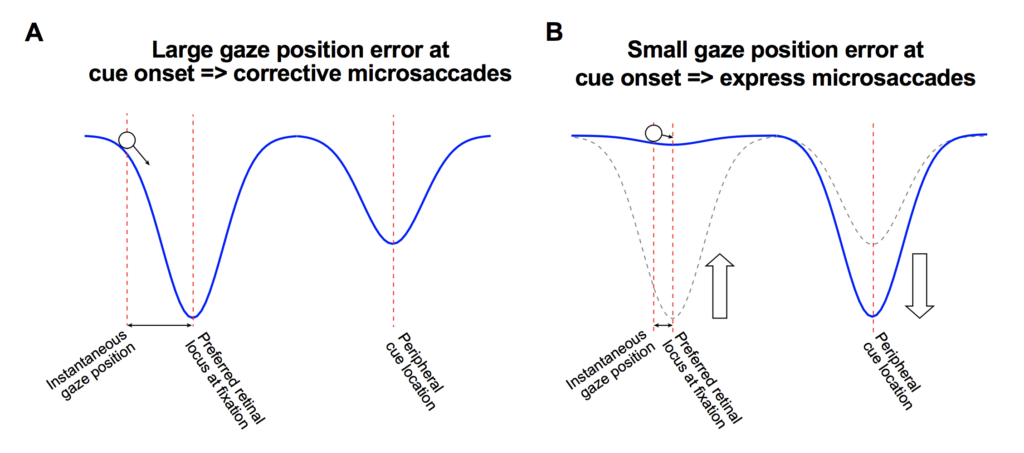We have an exciting new paper in press at the Journal of Neurophysiology. The paper is part of a Special Issue on the Role of Eye Movements in Perception, Cognition, and Action.
 In this paper, we discovered a new phenomenon associated with microsaccades (the tiny eye movements that we have been studying in our lab in recent years). Specifically, we found that if a subject fixates for a while and a peripheral stimulus appears, under some circumstances, a phenomenon that we termed “Express Microsaccades” curiously occurred. These special movements (express microsaccades) were larger than regular microsaccades, but they happened with ultra short latencies from stimulus onset (<100 ms). They were also always directed towards the direction of the peripheral stimulus location.
In this paper, we discovered a new phenomenon associated with microsaccades (the tiny eye movements that we have been studying in our lab in recent years). Specifically, we found that if a subject fixates for a while and a peripheral stimulus appears, under some circumstances, a phenomenon that we termed “Express Microsaccades” curiously occurred. These special movements (express microsaccades) were larger than regular microsaccades, but they happened with ultra short latencies from stimulus onset (<100 ms). They were also always directed towards the direction of the peripheral stimulus location.
We were particularly intrigued by this phenomenon because it taught us something new about how eye position may be controlled in the brain. We found that such control may be likened to an idea of balance. So, imagine, for example, that you have a ball rolling along an “energy landscape”. If there is a local minimum in the energy landscape, then the ball will try to sit at this minimum (e.g. gravity). We found that normal microsaccades act exactly like this ball. They attempt to approach the local minimum in the energy landscape. However, under some circumstances, the eye position (the “ball”) was already almost perfectly located at the local minimum. This resulted in an “unstable equilibrium” state, which meant that peripheral stimulus onset (causing another local minimum in the energy landscape at another location) was particularly potent in attracting the “ball” (eye movement) to its location.
 This remarkably simple mechanism then allowed us to extend these findings to reveal potential mechanisms for how eye position may be controlled by the brain even without microsaccades. That is, in between microsaccades, there are slow drifts in eye position that are extremely small (called ocular drifts). Our results revealed important first hints about how such drifts may be controlled in the brain.
This remarkably simple mechanism then allowed us to extend these findings to reveal potential mechanisms for how eye position may be controlled by the brain even without microsaccades. That is, in between microsaccades, there are slow drifts in eye position that are extremely small (called ocular drifts). Our results revealed important first hints about how such drifts may be controlled in the brain.
This paper, in addition to other recent studies from our lab (like this one, this one, and this one), has highly interesting implications on the topic of the special issue that the paper is in (perception, cognition, and action).
